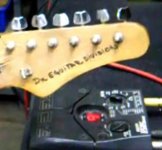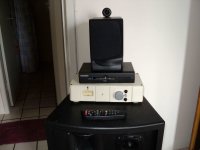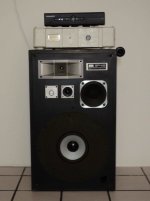Renatovsky Kalichinikowa thinks the Dx Blame ES is an amplifier
strong as iron.
YouTube - Dx Blame ES "O Amplificador de Ferro ll"
The model ES fan club does not accept any criticism related to the ES model...i do accept, and you see that i have created the ST to substitute the ES...but they have not accepted....well..... i am glad they like.
regards,
Carlos
strong as iron.
YouTube - Dx Blame ES "O Amplificador de Ferro ll"
The model ES fan club does not accept any criticism related to the ES model...i do accept, and you see that i have created the ST to substitute the ES...but they have not accepted....well..... i am glad they like.
regards,
Carlos
Attachments
Last edited:
The best from the best...the cream from the cream... the one i use to listen
Is this one..all features are under test...this is the one i listen some hours each day.
The one that resulted the best..sinergy maybe..some different parts..some decisions taken in the absence of some parts that where substituted by others and sounded very good.
regards,
Carlos
Is this one..all features are under test...this is the one i listen some hours each day.
The one that resulted the best..sinergy maybe..some different parts..some decisions taken in the absence of some parts that where substituted by others and sounded very good.
regards,
Carlos
Attachments
Rudi is offering Dx Blame ES boards...his boards have supply
This is a good oportunity to you to experience the sonics.
Enjoy and be happy with the Blame ES.... one of the best audio amplifiers ever made.
Here you have the link to Rudi's group buy:
http://www.diyaudio.com/forums/group-buys/172901-dx-blame-group-buy-23.html#post2460653
regards,
Carlos
This is a good oportunity to you to experience the sonics.
Enjoy and be happy with the Blame ES.... one of the best audio amplifiers ever made.
Here you have the link to Rudi's group buy:
http://www.diyaudio.com/forums/group-buys/172901-dx-blame-group-buy-23.html#post2460653
regards,
Carlos
Last edited:
Setting the bias on Blame...ES
I have one channel sitting at 4.7 volts (positive rail, 4.8v on negative rail) across the 100R protection resistor (in place of fuse).
On the second channel, I can get 4.7 volts across the protection resistor (positive rail) but the negative rail differs by about +0.4V (e.g. 5.1 V). They track well, that is, if I adjust the potentiometer so that the voltage across the 100R drops to 4.7V (on the negative rail), the voltage across 100R (positive rail side) is 4.3V.
I didn't expect so large a difference. Does any one have any advice?
What is the desired voltage across the output emitter resistors (0.22R in my case)? That is, when fully powered without protection resistors.
Thanks much.
Ryan
I have one channel sitting at 4.7 volts (positive rail, 4.8v on negative rail) across the 100R protection resistor (in place of fuse).
On the second channel, I can get 4.7 volts across the protection resistor (positive rail) but the negative rail differs by about +0.4V (e.g. 5.1 V). They track well, that is, if I adjust the potentiometer so that the voltage across the 100R drops to 4.7V (on the negative rail), the voltage across 100R (positive rail side) is 4.3V.
I didn't expect so large a difference. Does any one have any advice?
What is the desired voltage across the output emitter resistors (0.22R in my case)? That is, when fully powered without protection resistors.
Thanks much.
Ryan
Sometimes we have differences due to parts.... some wrong resistance
or huge difference in gain of transistors...but 10 percent or even 20 percent error is not too much for audio analogue electronics..... usually we have some errors.
Check your amplifier... measure your resistances..check them..... sometimes we read 39 and we install 390 in place.... this happens from time to time.
Inform your off set.... when normal it is smaller than 25 milivolts...... and understand that huge off set of 100 milivolts is even not important...because 100 milivolts represents one miliwatt...this is not important...do not move the speaker... anything to bother yourself about.
Power emitter resistances...from 1 to 5 milivolts is fine....bad when you have less than 100 microvolts...the idea is to have the output stage conducting, even in stand by mode...when conducting some voltage drop appear into the resistance extremes.
Be happy,
regards,
Carlos
or huge difference in gain of transistors...but 10 percent or even 20 percent error is not too much for audio analogue electronics..... usually we have some errors.
Check your amplifier... measure your resistances..check them..... sometimes we read 39 and we install 390 in place.... this happens from time to time.
Inform your off set.... when normal it is smaller than 25 milivolts...... and understand that huge off set of 100 milivolts is even not important...because 100 milivolts represents one miliwatt...this is not important...do not move the speaker... anything to bother yourself about.
Power emitter resistances...from 1 to 5 milivolts is fine....bad when you have less than 100 microvolts...the idea is to have the output stage conducting, even in stand by mode...when conducting some voltage drop appear into the resistance extremes.
Be happy,
regards,
Carlos
Hello Sir/Mr. Destroyer X,
I have been reading the threads of your DX BLAME MKII Supercharged and the DHR Turbo amplifiers. I can't see any latest threads for the DHR Turbo. I wanted to build both amplifiers. However, before I will start making the amplifiers, I want to know which one is better?
I like the DHR turbo as it can drive lower impedances as low as 2Ohms. Not to mention it is also very powerful. I have simulated the DH Turbo using Mulstisim 10 and it was great! I have noticed that it requires 1.8v to clip. Although, this is not the case in the real world . But the circuitry proves to be a wonderful piece to make.
Now, looking at your DX Blame MKII Supercharged (DX B.MKII.S.), makes me think twice. I haven't run the simulation on this amp at the moment but I have seen the test made on one of the videos posted. Will it be best to bridge the DX B.MKII.S. at +-55Vdc rails driving 4ohms speakers? I saw the video (Supercharged, 10khz square wave - 228 watts RMS at 3.5ohms. Bridging the amp driving the same impedance would be around 912Watts RMS.
Thank you so much for reading my post.
Cheers,
Blueice23
Is there a modification for the DX Blame series for it to drive 2 Ohms speakers?
I have been reading the threads of your DX BLAME MKII Supercharged and the DHR Turbo amplifiers. I can't see any latest threads for the DHR Turbo. I wanted to build both amplifiers. However, before I will start making the amplifiers, I want to know which one is better?
I like the DHR turbo as it can drive lower impedances as low as 2Ohms. Not to mention it is also very powerful. I have simulated the DH Turbo using Mulstisim 10 and it was great! I have noticed that it requires 1.8v to clip. Although, this is not the case in the real world . But the circuitry proves to be a wonderful piece to make.
Now, looking at your DX Blame MKII Supercharged (DX B.MKII.S.), makes me think twice. I haven't run the simulation on this amp at the moment but I have seen the test made on one of the videos posted. Will it be best to bridge the DX B.MKII.S. at +-55Vdc rails driving 4ohms speakers? I saw the video (Supercharged, 10khz square wave - 228 watts RMS at 3.5ohms. Bridging the amp driving the same impedance would be around 912Watts RMS.
Thank you so much for reading my post.
Cheers,
Blueice23
Is there a modification for the DX Blame series for it to drive 2 Ohms speakers?
Thank you Blueice23... as you have the simulator you can tweak
to match your needs in sensitivity, ouput impedance, power levels and so on.
Be happy and enjoy,
regards,
Carlos
to match your needs in sensitivity, ouput impedance, power levels and so on.
Be happy and enjoy,
regards,
Carlos
- Status
- Not open for further replies.
- Home
- Amplifiers
- Solid State
- Dx Blame ES .... based into the Blameless, i am trying a new amplifier


